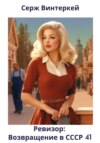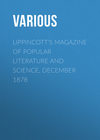Czytaj książkę: «Birds and Nature Vol. 9 No. 2 [February 1901]»
FEBRUARY
Still lie the sheltering snows, undimmed and white;
And reigns the winter’s pregnant silence still;
No sign of spring, save that the catkins fill,
And willow stems grow daily red and bright.
These are the days when ancients held a rite
Of expiation for the old year’s ill,
And prayer to purify the new year’s will;
Fit days, ere yet the spring rains blur the sight,
Ere yet the bounding blood grows hot with haste,
And dreaming thoughts grow heavy with a greed
The ardent summer’s joy to have and taste;
Fit days, to give to last year’s losses heed,
To reckon clear the new life’s sterner need;
Fit days, for Feast of Expiation placed!
– Helen Hunt Jackson.
FROST-WORK
These winter nights, against my window-pane
Nature with busy pencil draws designs
Of ferns and blossoms and fine spray of pines,
Oak-leaf and acorn and fantastic vines,
Which she will make when summer comes again —
Quaint arabesques in argent, flat and cold,
Like curious Chinese etchings… By and by,
Walking my leafy garden as of old,
These frosty fantasies shall charm my eye
In azure, damask, emerald, and gold.
– Thomas Bailey Aldrich.
THE HAWKS
Among the birds that are most useful to man may be classed the Hawks. They, with the vultures, the eagles and the owls, belong to the bird order Raptores, or birds of prey. Unlike the vultures the Hawks feed upon living prey while the former seek the dead or dying animal. The vultures are often called “Nature’s Scavengers,” and in many localities they have been so carefully protected that they will frequent the streets of towns, seeking food in the gutters.
The family Falconidae, which includes the Hawks, the falcons, the vultures, the kites, and the eagles – all diurnal birds of prey – numbers about three hundred and fifty species, of which between forty and fifty are found in North America. The remainder are distributed throughout the world.
The flight of the Hawks is more than beautiful, it is majestic. Even when perched high in the air on the top of a dead monarch of the forest, there is a silent dignity in their pose. It is from these perches that some of the species watch the surrounding country for their prey, swooping down upon it when observed and seizing it in their long, sharp and curved claws. Their food is almost invariably captured while on the wing. The bill, which is short, hooked and with sinuate cutting edges, is used for tearing the flesh of its victim into shreds.
Among our more common hawks there are but five or six that may truthfully be classed among the birds that are injurious to the interests of man. Among these, the Cooper’s hawk and the sharp-shinned hawk deserve the most attention, as they feed almost entirely upon other birds and poultry. To these two the name chicken hawk may be aptly applied. The domestic pigeon is a dainty morsel for these ravagers of the barnyard. On the other hand, by far the larger number of the Hawks are of great value to man. They are gluttonous whenever the food supply is unlimited, and, as their powers of digestion are wonderfully developed, it takes but a short time for the food to be absorbed and they are then ready for more. With their keen eyesight they readily detect the rodents and other small mammals that are so destructive to crops and with a remarkable swiftness of flight they pounce upon them. Dr. Fisher says, “Of the rapacious birds with which our country is so well furnished, there are but few which deserve to be put on the black list and pursued without mercy. The greater number either pass their whole lives in the constant performance of acts of direct benefit to man or else more than make good the harm they do in the destruction of insectivorous birds and poultry by destroying a much greater number of mammals well known to be hostile to the farmer.”
Dr. Fisher obtained the following results from the examination of the stomachs of two thousand, two hundred and twelve birds of prey. This number does not include any of those that feed extensively upon game and poultry. In three and one-half per centum the remains of poultry or game birds were found; eleven per centum contained remains of other birds; forty-two and one-half per centum contained the remains of mice; in fourteen per centum other mammals were found and twenty-seven per centum contained insect remains. This summary includes not only the Hawks but also the owls, eagles and related birds. It is evident from these results that man has a friend in these birds that is of inestimable value to him.
The use of falcons and Hawks in the chase dates far back in the history of the Old World. For ages it was one of the principal sports of mankind and especially of the nobility. Hawks may be trained to a high degree of efficiency in the capturing of other birds. It is said that the Chinese knew of this characteristic of the Hawks at least two thousand years before the time of Christ. In Japan the art of falconry was practiced about six or seven hundred years before Christ.
The art is also believed to be represented in a bas-relief found in the Khorsahad ruins in which a falconer is apparently bearing a hawk on his wrist. Thus these ancient ruins of Nineveh show that the art must have been known at least seventeen hundred years before Christ.
That falconry was known to the ancient races of Africa is highly probable, though there is but little in the earlier written history of that continent regarding it. Egyptian carvings and drawings, however, indicate without a doubt that the art was there known centuries ago. Falconry is still practiced to some extent in Africa.
The art, though not obsolete in those countries of Europe where, in the middle ages, it was regarded as the greatest and most noble of all sports, is not national in its character. During the reign of William the Conqueror laws were enacted in England which were most stringent regarding falconry. At one time “falcons and hawks were allotted to degrees and orders of men according to rank and station, to royalty the jerfalcon, to an earl the peregrine, to a yeoman the goshawk, to a priest the sparrow-hawk, and to a knave or servant the useless kestrel.”
To train a hawk for this sport requires great skill and patience. The temper, disposition and, in fact, every peculiarity of each individual bird must be carefully studied. In these respects it may be said that no two birds are exactly alike. Technically the name falcon, as used by the falconer, is applied only to the female of the various species used in the conducting of this sport.
The peregrine falcon or hawk is usually accepted as the type falcon of falconry. The name peregrine, from the Latin peregrinus, means wandering, and refers to the fact that this species is almost cosmopolitan, though the geographical races are given varietal names. The duck hawk (Falco peregrinus anatum) is one of the representatives in America. “The food of this hawk consists almost exclusively of birds, of which water-fowl and shore birds form the greater part.”
The Hawks of our illustration are natives of North America ranging from Mexico northward. The American Rough-legged Hawk (Archibuteo lagopus sancti-johannis) is a geographical variety of a rough-legged form that is found in northern Europe and Asia. It is also known by the names of Black Rough-legged and Black Hawk.
This Hawk is one of the largest and most attractive of all the species of North America. Dr. Fisher tells us that “it is mild and gentle in disposition, and even when adult may be tamed in the course of a few days so that it will take food from the hand and allow its head and back to be stroked. When caged with other species of hawks, it does not as a rule fight for the food, but waits until the others have finished, before it begins to eat.”
In spite of its large size and apparent strength it does not exhibit the spirit that is so characteristic of the falcons. It preys almost entirely on field mice and other rodents, frogs and probably, at times and in certain localities, upon insects especially the grasshoppers. It is said that they will feed upon lizards, snakes and toads. They do not molest the poultry of the farmer or the game birds of the field, forest or of our water courses, at least not to any extent. Their size and their slow and heavy flight would nearly always give sufficient warning to permit the ordinary fowls to seek cover.
No better evidence as to the character of its food can be furnished than the results of the examination of forty-nine stomachs as related by Dr. Fisher. Of these forty contained mice; five, other mammals; one, lizards; one, the remains of seventy insects (this specimen was killed in Nebraska); and four, were empty. It is interesting to note “that the southern limit of its wanderings in winter is nearly coincident with the southern boundary of the region inhabited by meadow mice.”
Sir John Richardson says, “In the softness and fullness of its plumage, its feathered legs and habits, this bird bears some resemblance to the owls. It flies slowly, sits for a long time on the bough of a tree, watching for mice, frogs, etc., and is often seen sailing over swampy pieces of ground, and hunting for its prey by the subdued daylight, which illuminates even the midnight hours in the high parallels of latitude.” Mr. Ridgway says, “for noble presence and piercing eye this bird has few equals among our Falconidae.”
The eggs of this species vary from two to five and are usually somewhat blotched or irregularly marked with chocolate brown on a dull white background.
The Red-tailed Hawk (Buteo borealis) of our illustration is young and shows the plumage of the immature form.
This species may be called our winter hawk and for this reason the name borealis is most appropriate. “The coldest days of January serve to give this hawk a keener eye and a deeper zest for the chase.” The best locality to seek the Red-tail may be found at the wooded borders of pastures and streams, where it can easily perceive and swoop down upon its prey. It seldom visits a barnyard, but will occasionally catch a fowl that has strayed away from the protection of buildings. Its food consists to a great extent of meadow and other species of mice, rabbits and other rodents. The remains of toads, frogs and snakes have also been found in its stomach. One writer says, “The Red-tailed Hawk is a powerful bird and I once saw one strike a full-grown muskrat, which it tore to pieces and devoured the greater part.”
Dr. Fisher gives an interesting summary of the examination of five hundred and sixty-two stomachs. Fifty-four contained poultry or game birds; fifty-one, other birds; two hundred and seventy-eight contained mice; one hundred and thirty-one, other mammals; thirty-seven, frogs and related animals or reptiles; forty-seven, insects; eight, crawfish; one, centipedes; thirteen, offal, and eighty-nine were empty. This surely is not a bad showing for this bird, so often maligned by being called “hen” or “chicken-hawk.” Its preferred food is evidently the smaller mammals, and as it is common or even abundant it must be of great value to agricultural interests. The younger birds are more apt to take poultry because of “a lack of skill in procuring a sufficient quantity of the more usual prey.”
Mr. P. M. Silloway says, “None of the Hawks has suffered more undeserved persecution than has the Red-tailed Buzzard or Hawk, whose characteristics place it among the ignoble falcons, or hawks, of feudal times. Lacking the swiftness and impetuosity of attack peculiar to the true falcons, it depends on its ability to surprise its prey and drop upon it when unable to escape.”
During the summer months it retires to the forests to breed, where it builds a large and bulky though shallow nest in trees, often at a height of from fifty to seventy-five feet from the ground. The nest is constructed of sticks and small twigs and lined with grass, moss, feathers or other soft materials. The number of eggs is usually three, though there may be two or four. They are a little over two inches long and less than two inches in diameter. They are dull whitish in color and usually somewhat marked with various shades of brown.
The full plumage of the adult is not acquired for some time and the bird has been long full grown before the characteristic red color of the tail appears.
Seth Mindwell.
INTERESTING STONE HOUSES
While the children were playing in a small brook, they found something entirely new to them, and as usual, came with hands full, shouting, “We have found something new! Do you know what these are?”
These new treasures proved to be the larvae of the caddis fly in their stone houses. This little creature is noted for its complete metamorphosis. The female fly often descends to the depth of a foot or more in water to deposit her eggs. As the eggs hatch the habits of their larvae are exceedingly interesting.
They are aquatic, being long, softish grubs, with six feet. The fish are very fond of them, for which reason they are in great demand for bait. The angler looks for “cad-bait” along the edges of streams, under stones, or on the stalks of aquatic plants. One can easily see that their lives are not free from care and danger, and so to protect themselves, they are very wise in building cylindrical cases in which they live during this dangerous period. The different species, of which there are many, seem to have their individual preference as to the substance which they employ in building these houses, some using bits of wood, others shells, pebbles, or straws. They readily disregard these preferences when there is a lack of the material which they usually prefer.
Those brought to me were made of different colored pebbles and were very pretty homes. We counted the pebbles in one of them and found there were eighty-nine used, and built so securely that it could not be easily crushed by our fingers. They were all about an inch in length, a quarter of an inch in diameter and were perfect cylinders with a large pebble fastening one end; so no fish could catch them unawares. We placed them in water, where we could watch their development. They never willingly left their homes, only thrusting the head and a portion of the body out in search of food.
When about to pass into the torpid pupa state, they fastened their houses to some sticks and stones in the water, and then closed the end with a strong silken grating, which allowed the water to pass freely through their houses, keeping them sweet and fresh. We are told that this fresh water is necessary for the respiration of the pupa. Thus they remain quiet for a time until they are ready to assume the imago form. When that important period arrives they make an opening in the silken grating with a pair of hooked jaws, which seem to have developed while resting in the pupa state. They also have become efficient swimmers, using their long hind legs to assist them. After enjoying this new exercise of swimming for a short time they evidently become anxious for a wider experience, and coming to the surface of the water, usually climbing up some plant, the skin of the swimmer gapes open and out flies the perfect insect. Sometimes this final change takes place on the surface of the water, when they use their deserted skin as a sort of raft, from which to rise into the air, and away they go to new fields and new experiences. These insects are known as the caddis-fly of the order Neuroptera, having four wings, measuring about an inch when full spread, with branched nervures, of which the anterior pair are clothed with hairs; the posterior pair are folded in repose. The head is furnished with a pair of large eyes, with three ocelli, and the antennae are generally very long.
If you know the haunts of this interesting house builder, scatter some bright sand and tiny pebbles in the water, and when they are deserted, gather the houses for your collection.
Rest H. Metcalf.
![Birds and Nature Vol. 9 No. 2 [February 1901]](https://cdn.litres.ru/pub/c/cover_100/25569151.jpg)



















